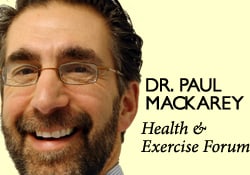
A recent study in the European Journal of Preventive Cardiology found that only smokers died early at higher rates than couch potatoes! The study was the longest of its kind as researchers followed approximately 800 men for 50 years and concluded with this powerful message: poor physical fitness may be almost as bad for you as smoking…so make exercise a lifesaving priority.
Is there a secret to a long and healthy life? Do genes control our destiny? How does lifestyle impact our health? According to the National Institutes of Health (NIH), while genes play and important role, lifestyle plays the biggest role on how healthy you are and how long you live. The food you eat, what you drink, if you smoke, how active you are and how you handle stress are critical factors that determine your longevity. The NIH research has found that smoking, physical inactivity, and poor eating habits are the leading causes of death, in that order.
Physical activity is one of the most important factors in improving a lifestyle in a positive way. A minimum of 30 minutes of physical activity, 5 days per week can greatly contribute to longevity. Most experts agree that moderation is important. If you overindulge with exercise you will be at greater risk for musculoskeletal injuries. This is especially true for those who are newcomers. The goal is to gradually work into a fitness program and maintain it for life.
Researchers have found that the benefits of regular physical activity are numerous. Some of the more important benefits are:
Some simple suggestions for beginning an exercise program are:
Visit your doctor regularly and listen to your body.
Keep moving, eat healthy foods, exercise regularly, and live long and well!
NEXT MONDAY – Read Dr. Paul J. Mackarey “Health & Exercise Forum!”
This article is not intended as a substitute for medical treatment. If you have questions related to your medical condition, please contact your family physician. For further inquires related to this topic email: drpmackarey@msn.com
Paul J. Mackarey PT, DHSc, OCS is a Doctor in Health Sciences specializing in orthopaedic and sports physical therapy. Dr. Mackarey is in private practice and is an associate professor of clinical medicine at GCSOM.
Guest Columnist: Catherine Udomsak Heimrich, DPT

Getting back into shape after having a baby is a priority for many new moms. However, with little sleep and lots of new responsibilities this goal can often fall to the wayside. Taking the time to ease into an exercise program is key to success as well as giving yourself some grace. After all, you did just bring a new life into this world!
As per the American College of Obstetrician and Gynecologists, postpartum exercise has several benefits. These include stress relief, boosts energy, promotes better sleep, strengthens and tones abdominal muscles, helps manage weight, and may help prevent postpartum depression. If you have a healthy pregnancy and normal vaginal delivery you may begin exercise a few days after giving birth. However, it is recommended to wait until you feel you are ready which for many women may mean a few weeks after delivery. If you have a cesarean birth, or any medical complications during delivery it is best to discuss with your OB-GYN when it is safe to begin exercising.
Similar to pregnancy, 150 minutes of activity per week is recommended starting with 20-30 minutes a day. One should ease into working out and stop if it produces any pain. Walking is a great way to begin aerobic activity post-partum and something you can easily do with your newborn in his or her stroller. Joining other moms on these walks or partaking in a group fitness class is another great way to get motivated and commit to getting fit. If you are restricted to staying home with the baby, there are countless postpartum workout videos offered for free on YouTube and several apps targeted at new moms. Some even show you how to incorporate your baby into your workout.
In addition to aerobic activity, strength training, specifically targeting core muscles is essential to a new mom’s fitness routine. Our abdominal muscles typically become weak during pregnancy due to stretching and hormonal changes which prepare our bodies for delivery. After delivery, many moms find themselves bending over and lifting to care for their newborn which puts great stress on the low back. Our abdominal muscles are what provide support for our lumbar spine and stabilize our pelvis. By incorporating core strengthening into one’s fitness routine you can help reduce the development of low back pain. Post pregnancy, some women may even suffer from a condition referred to as diastasis recti. This condition is a structural separation of the two large bands of abdominal muscle that meet at midline. It can occasionally be corrected through core exercise but at times can require surgery depending on severity.
Some simple ways you can get started strengthening your core postpartum include:
Pelvic Tilts – Lying on your back with your knees bent and feet flat on floor, gently tighten your abdominal muscles drawing your belly button toward your spine and flattening you back to the floor.
Pelvic tilt with alternating heel slides – Perform a pelvic tilt. While maintaining back flat to floor gently slide heel down and straighten leg. Alternate legs.
Pelvic tilt with heel taps – Hold a pelvic tilt and lift both legs up keeping knees bent. Then slowly tap one heel down. Alternate legs and keep back flat to floor.
Double Leg Lifts – While lying flat on back extend your legs up straight toward the ceiling. Slowly lower both legs down to the floor and then slowly raise them back up. Maintain pelvic tilt while performing. If this is too difficult lower one leg at a time.
Forearm Plank – Begin lying on your stomach with your forearms flat on floor. Engage your core and raise your body up off the floor. Keep your body in a straight line from your head to your feet. Keep abdominals engaged.
Bridges - Lying on your back with knees bent and feet hip distance apart squeeze gluteal muscles and lift your hips toward the ceiling then slowly lower. Keep core muscles activated.
Single leg bridge - Perform a bridge while keeping one foot planted on floor and other leg lifted towards the ceiling. Keep core muscles activated.
In addition to your core, it is important to tone the muscles of your pelvic floor which often become weak with pregnancy. A simple way to do this is to perform Kegel exercises in which you contract your pelvic muscles as if you are stopping the flow of urine midstream. You can so this sitting or standing and even with movement.
Tips for postpartum exercise:
• Drink plenty of water, especially if you are nursing which can be dehydrating.
• Feed your baby or express milk prior to exercise if nursing to avoid any discomfort or engorgement.
• Wear loose clothing to keep cool and supportive foot wear.
• Make sure to warm up before and cool down after exercise to avoid injury.
If I have learned anything from my own experience and conversations with other mothers, it’s that every baby and every pregnancy is different. Don’t compare yourself to others! Everyone’s physical fitness journey is unique and only you know what is best for you and your baby.
Guest Columnist: Catherine Udomsak Heimrich, DPT is a doctor of physical therapy and is an associate at Mackarey & Mackarey Physical Therapy Consultants, LLC in downtown Scranton, where she works with outpatient orthopedic and neurological patients. She has a special interest in vestibular and balance problems. She is also a new mom!
Model: Sarah Singer, PTA is a physical therapist assistant at Mackarey & Mackarey Physical Therapy and is also a relatively new mom!
Read Dr. Mackarey’s Health & Exercise Forum – Every Monday.
This article is not intended as a substitute for medical treatment. If you have questions related to your medical condition, please contact your family physician. For further inquires related to this topic email: drpmackarey@msn.com
Paul J. Mackarey PT, DHSc, OCS is a Doctor in Health Sciences specializing in orthopaedic and sports physical therapy. Dr. Mackarey is in private practice and is an associate professor of clinical medicine at Geisinger Commonwealth School of Medicine.
Part 1 of 2
Guest Columnist: Catherine Udomsak Heimrich, PT, DPT

For many women, expecting a baby can be one of the happiest times in their lives. Pregnancy comes with much joy and excitement as one prepares to bring a new life into this world. While much of the preparation is focused on the baby, it is imperative for pregnant women to take some time to focus on their personal health. Your body goes through immense physical changes during pregnancy and it is easy to avoid staying physically active. However, prioritizing fitness is important for women as research confirms exercise during pregnancy has benefits for both mom and baby.
Currently, there is strong evidence that maintaining moderate exercise during pregnancy is safe and advantageous for women. Some of the benefits include prevention of excessive weight gain and a lower risk for gestational diabetes, pre-eclampsia (development of high blood pressure), low back pain, cesarean section, pelvic pain and urinary incontinence, and fetal macrosomia (a baby with a birthweight of greater than eight pounds). Furthermore, it increases your overall general fitness and strengthens one’s heart and blood vessels. As long as there are no medical or obstetric contraindications to physical activity, exercise does not pose as a risk for premature birth or fetal distress in pregnant women.
When it comes to the type of exercise, The American College of Obstetricians and Gynecologists recommends combining both aerobic and strength training. It also recommends 150 minutes of exercise per week which can be spread out through several 20 to 30 minute sessions. Intensity should always be moderate which is the equivalent of brisk walking. One should be able to still hold a conversation comfortably but be unable to sing. Activities considered safe for pregnant women include but are not limited to swimming, stationary cycling, modified yoga, modified pilates, walking, strength training, and low impact aerobics. Activities that may need to be avoided include contact sports and activities with high risk of falling such as downhill skiing, horseback riding, and off-road cycling. Furthermore, pregnant women should avoid spending prolonged time lying flat on their backs and avoid using weights that strain the lower back.
Pregnancy is an ideal time to adopt a healthy lifestyle even for those who don’t consider themselves active or “in good shape”. Women who are sedentary prior to pregnancy can begin an exercise program and reap all the benefits of physical activity. It is recommended that those who are not active prior to pregnancy have a more gradual progression toward exercise. This could mean going for 10-minute walks most days of the week and gradually working up to 150 minutes of brisk walking. Both active and sedentary women should consult their doctor prior to beginning or continuing an exercise program to ensure wellbeing for both mom and baby. If you are someone who regularly participates in high intensity exercises, such as running or aerobics, it may be possible to continue these activities. Currently, there is no upper level of safe exercise established and response to exercise can differ for every woman. One’s joints are more lax during pregnancy, so ankle sprains and other injuries can occur more easily. Avoiding rocky terrain or uneven ground when running, cycling, etc. is advisable. Again, it is always best to get clearance from your doctor and be sure to listen to your body.
While most women with an uncomplicated pregnancy will have no problems with exercising it is important to be aware of any abnormal response to activity. Some warning signs to discontinue exercise include vaginal bleeding, regular painful contractions, amniotic fluid leakage, dizziness, headache, chest pain, calf pain and swelling. If you experience any of these symptoms it is advisable to stop your current exercise program consult your OB-GYN before resuming your workout.
Next Week: Healthy Mom, Healthy Baby…Postpartum Exercises Part 2
Guest Columnist: Catherine Udomsak Heimrich, DPT is a doctor of physical therapy and is an associate at Mackarey & Mackarey Physical Therapy Consultants, LLC in downtown Scranton, where she works with outpatient orthopedic and neurological patients. She has a special interest in vestibular and balance problems.
Read Dr. Mackarey’s Health & Exercise Forum – Every Monday. Next Week: Healthy Mom - Part 2
This article is not intended as a substitute for medical treatment. If you have questions related to your medical condition, please contact your family physician. For further inquires related to this topic email: drpmackarey@msn.com
Paul J. Mackarey PT, DHSc, OCS is a Doctor in Health Sciences specializing in orthopaedic and sports physical therapy. Dr. Mackarey is in private practice and is an associate professor of clinical medicine at Geisinger Commonwealth School of Medicine.
By Mary M. Pelkowski, MD2
Special Feature “ Health & Exercise Forum” with Geisinger Commonwealth School of Medicine the 3rd Monday of every month!

GCSOM Guest Author: Mary Pelkowski, MD2 is a student in the Geisinger Commonwealth School of Medicine MD Class of 2022. She grew up in Sayre, PA and graduated from Notre Dame High School. She received her undergraduate degree in biology with a minor in chemistry from Saint John Fisher College in Rochester, NY.
Back to school also means back to sports. Countless students are participating in tennis, soccer, cross country running, gymnastics, and other sports. These student athletes and others who engage in recreational sports and exercise can be vulnerable to excessive training for all the right and wrong reasons. Parents, family members, coaches, teachers, athletic trainers, friends and health providers must be aware of potential for exercise abuse…as part of the “fitspiration” movement.
It takes only a cursory glance through social media to become aware of the “fitspiration” movement. This catchy term may accompany posts of workout videos, pictures depicting physical activity, or pictures of individuals showing off the muscular bodies they obtained through dedication to rigorous exercise regimens. In a sense, exercise and fitness have become trendy in our society, with more strenuous exercise routines being perceived as more impressive. Cars boast bumper stickers with numbers such as “13.1,” “26.2,” or even “50,” referring to the distances so proudly conquered by runners. When we hear a friend has decided to commit to a rigid training schedule to complete a marathon, we are often in awe of their self-control and motivation, wishing we were that dedicated. But can exercise be a bad thing? The answer is complicated. Exercise is one of the best things we can do for our health. I have heard physicians say that if all the benefits of exercise could be bottled up into a pill; pharmaceutical companies would be fighting for the chance to sell it. However, it can get complicated when one’s reasons for exercising stem from a potentially destructive place, rather than a pursuit of health.
Exercise bulimia is a term used to refer to the excessive use of exercise to burn calories or try to keep a low body weight. It is not a medical diagnosis in and of itself, but the notion of using exercise to make up for excessive calorie consumption or maintain an unhealthily low body weight can occur in both anorexia nervosa and bulimia nervosa. Moreover, when excessive exercise occurs in combination with a significantly low body weight, an intense fear of gaining weight, a disturbed body image, undue influence of body shape on self-worth, or a failure to recognize the seriousness of the condition, an individual would meet the criteria for anorexia nervosa.
Anorexia nervosa can cause serious complications in all body systems. Some examples include disrupted functioning of the heart, reduced lung capacity, hormonal imbalance, amenorrhea, (loss of the menstrual period in women), changes in brain structure, and in severe cases, difficulty with memory. The hormonal changes associated with amenorrhea, especially when coupled with extreme exercise, can lead to reduced bone density and can put women at high risk of stress fractures. Stress fractures are breaks in the bone that occur from overuse through large amounts of exercise rather than the traumatic bone breaks we typically think of where an obvious event results in a broken bone.
Because exercise bulimia can be a part of an eating disorder with potentially life-threatening consequences, it is important to be aware of the warning signs that someone’s exercise routine might be part of an eating disorder. Signs of exercise bulimia may include:
While the definition of exercise bulimia implies a voluntary engagement in excessive exercise for weight loss, my experience from being on female track and cross country teams in high school and college has shown me that anorexia nervosa does not always fit the mental picture we may have of someone who refuses to eat at all or even of exercise bulimia where an individual compulsively engages in excessive exercise. During cross country, the mileage we ran likely would have been considered excessive by the average person. Our team often trained 7 days a week with run-length ranging from 5-12 miles. Most runs were at least 7 miles, and some of my teammates had long runs in excess of 12 miles. The men on our team ran even farther. In hindsight, one of my teammates may have met the criteria for a diagnosis of anorexia nervosa. Her weight was significantly below normal, she feared weight gain, did not eat sufficient calories to replenish what she burned on runs, and despite knowing she was thin, did not fully recognize the potential health consequences due to her low weight. However, it was not a clear cut problem. She was not an obvious candidate for an eating disorder because she was not pursuing the excessive exercise; she was simply following her coach’s training plan. If she did not exercise to the extent she did, the amount of food she ate would have been considered normal, so seeing her eating habits alone did not trigger any red flags. Finally, cross country runners are known for being lean, often even emaciated; it was a common side effect of the sport often not given a second thought. Thankfully, this runner never fell victim to the dangerous downward spiral that is sometimes seen in patients with anorexia nervosa. However, it is important to be aware of the unsuspecting ways in which an eating disorder can sometimes present.
Treatment of eating disorders typically involves a multi-pronged approach with nutritional counseling, psychotherapy, and general medical care playing a role. The nutritional counseling aims to help the patient restore a healthy diet to attain a healthy weight, the psychotherapy aims at getting to the root of the issues that may have contributed to the onset of the eating disorder, and general medical care may be necessary to manage any complications from the eating disorder depending on its seriousness. Educational programs about eating disorders and risk factors have also been shown to be successful in helping to prevent eating disorders.
It can sometimes be a fine line between a healthy passion for exercising and eating well and the start of an eating disorder. Especially in athletes where extreme exercise is part of the sport and putting in extra training is rewarded, it is valuable to be aware of the signs and symptoms of exercise bulimia to help prevent a loved one from crossing over that line. Though serious health consequences are possible in the setting of an eating disorder, treatment and recovery are very possible.
For More Information: www.nationaleatingdisorders.org
Visit your doctor regularly and listen to your body.
Keep moving, eat healthy foods, exercise regularly, and live long and well!
NEXT MONDAY – Read Dr. Paul J. Mackarey “Health & Exercise Forum!”
This article is not intended as a substitute for medical treatment. If you have questions related to your medical condition, please contact your family physician. For further inquires related to this topic email: drpmackarey@msn.com
Paul J. Mackarey PT, DHSc, OCS is a Doctor in Health Sciences specializing in orthopaedic and sports physical therapy. Dr. Mackarey is in private practice and is an associate professor of clinical medicine at GCSOM.
High school fall sports have begun! This includes; football, soccer, golf, cheerleading, women’s tennis, etc. Unfortunately, even well-conditioned, healthy, young athletes are vulnerable to a variety of injuries, including a pulled muscle on the inside of the thigh called a groin strain. Groin strains are common in the pre and early season but with a few additions to an exercise and training program, prevention is possible.
Groin Strain
A groin strain is a tear of the muscle fibers of the groin muscle. The groin muscle is group of muscles (adductor muscles) that run from the hip (inner pelvis) and attach to the thigh bone (femur). The adductor muscles work to stabilize the hip during weight bearing activities, such as running. They are very active when an athlete changes direction, especially side to side such as guarding an opponent with a defensive slide. This injury, like others, varies in intensity. Severe groin strain occurs when many muscle fibers are torn. In very severe cases, the boney attachment can be pulled so strongly that a small fracture can occur. Healing time can be as short as a few days or as long as weeks or even months.
Your family physician will examine your hip and groin to determine if you have groin strain. In more advanced cases you may be referred to an orthopedic surgeon for further examination and treatment. An X-ray, MRI or bone scan will show the extent of the tear and if the bone is involved. The diagnosis will determine if you problem if minor, moderate or severe.
There are many conservative options. You and your family physician or orthopedic surgeon will decide which choices are best.
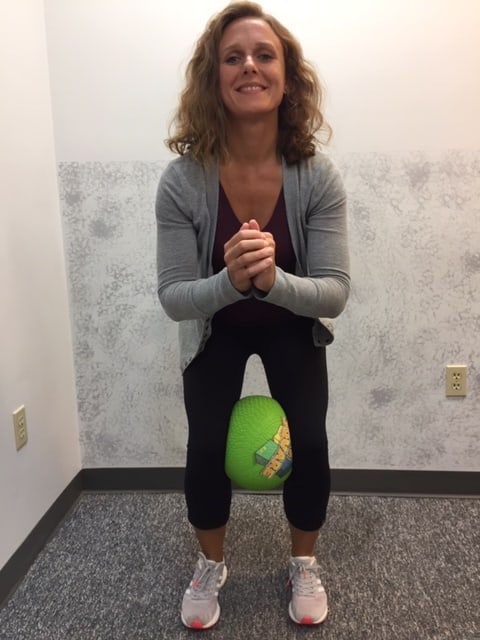
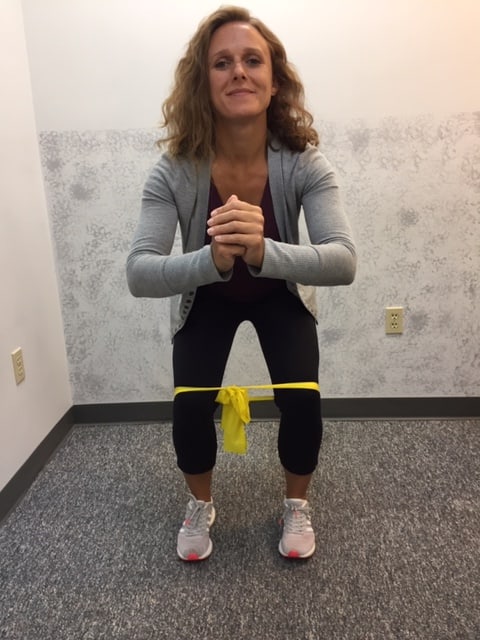
SOURCES: Journal of Physical Medicine & Rehabilitation and American Academy of Orthopaedic Surgeons
MODEL: Sarah Singer, Physical Therapist Assistant, Mackarey Physical Therapy
Visit your doctor regularly and listen to your body.
NEXT MONDAY – Read Dr. Paul J. Mackarey “Health & Exercise Forum!”
This article is not intended as a substitute for medical treatment. If you have questions related to your medical condition, please contact your family physician. For further inquires related to this topic email: drpmackarey@msn.com
Paul J. Mackarey PT, DHSc, OCS is a Doctor in Health Sciences specializing in orthopaedic and sports physical therapy. Dr. Mackarey is in private practice and is an associate professor of clinical medicine GCSOM.

Since 1894 Labor Day has been designated as the national holiday that pays tribute to the contributions and achievements of American workers. Research supports the notion that healthier employees are happier and more productive. When employers encourage healthy behavior and safety at work, they benefit in many ways. For example, in addition to improving job satisfaction and productivity, healthy employees save money by using less sick time, worker’s compensation benefits and health benefits. For example, according to the Centers for Disease Control and Prevention, approximately 75 percent of employers” health care costs are related to chronic medical problems such as obesity, diabetes, high blood pressure, and high cholesterol. Deconditioned, overweight employees are more likely to suffer from these preventable conditions and are at greater risk for injury. Employers, please consider using this holiday as an opportunity to start a health promotion program at your workplace…have a health fair, offer healthy snacks, encourage walking, smoking cessation, exercising at lunch, and offer fitness club stipends.
Lower back pain, one of the most costly illnesses to employers, is one example of a problem which can be prevented with a good health and safety program. It is widely accepted in the medical community that the best treatment for lower back pain (LBP) is prevention. Keeping fit, (flexible and strong), practicing good posture, and using proper body mechanics are essential in the prevention of LBP. At our clinic, significant time and effort is spent emphasizing the importance of these concepts to our patients, employees and the businesses we work with through industrial medicine programs. A comprehensive approach can produce significant reductions in LBP injuries through an onsite safety program which promotes education, wellness, body mechanics, lifting techniques, postural and stretching exercises and ergonomics.
As little as 10 extra pounds puts great stress on your lower back. It also makes it more difficult to maintain good posture. Eat well, exercise regularly and don’t smoke. Smokers have a much higher incidence of LBP and failure from lower back surgery.
Good posture is critical for a healthy back. When sitting, standing or walking maintain a slight arch in your lower back, keep shoulders back, and head over your shoulders. In sitting, use a towel roll or small pillow in the small of the back.P
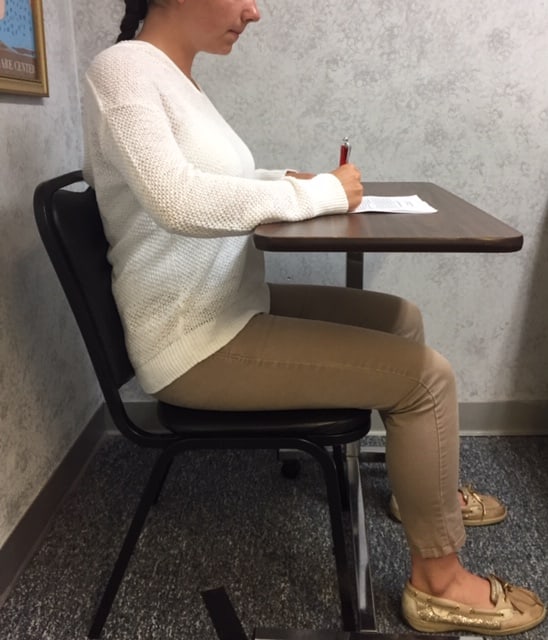
Perform postural exercises throughout the day. Most of the day we sit, stand, and reaching forward and bend our spine. These exercises are designed to stretch your back in the opposite direction of flexion. Please perform slowly, hold for 3-5 seconds and repeat 6 times each 6 times per day.
Chin Tuck: Tuck your chin back to bring your head over shoulders.
Shoulder Blade Pinch: Pinch your shoulder blades together.
Standing Extension: While standing, put your hands behind back and extend lower back 10-20 degrees.
Good Body Mechanics and ergonomics are also important in the prevention of LBP. When lifting, think twice. Think about the weight, shape and size of the object. Think about where the object is going and the surface resistance of the floor. Does it require two people to lift? Can I safely lift that high or bend that low?
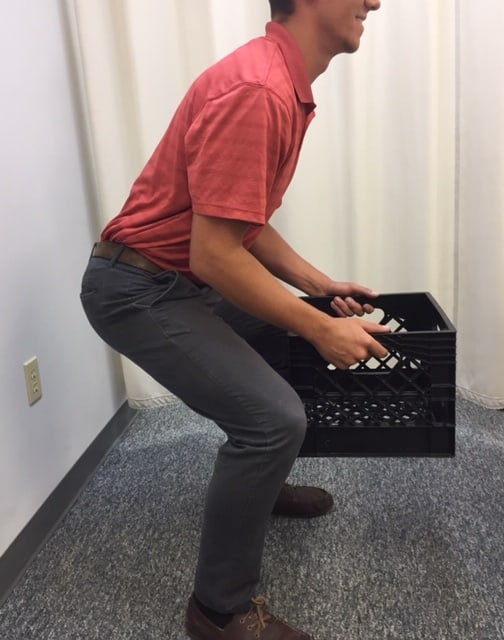
When bending to lift an object think about safety:
Visit your doctor regularly and listen to your body.
NEXT MONDAY – Read Dr. Paul J. Mackarey “Health & Exercise Forum!”
This article is not intended as a substitute for medical treatment. If you have questions related to your medical condition, please contact your family physician. For further inquires related to this topic email: drpmackarey@msn.com
Paul J. Mackarey PT, DHSc, OCS is a Doctor in Health Sciences specializing in orthopaedic and sports physical therapy. Dr. Mackarey is in private practice and is an associate professor of clinical medicine at GCSOM.

The government of India recently announced a ban on homework! Can you imagine…a ban on homework? In an effort to promote student health and address recent surges in the incidence of back pain in the young, there will be no homework for students in grades one and two.
It was estimated that the majority of students ages 7 – 13 in India were carrying almost half their body weight. Not surprisingly, medical practitioners noticed a dramatic increase in reported cases of back pain among this group and decided to take action. In addition to the homework ban for grades one and two, Indian authorities have also implemented a limit of 10% of the student’s bodyweight.
Back pain in students is not unique to India. Each year, as students in the United States prepare to return to school from summer vacation, the subject of backpacks arises. The good news is, when compared to purses, messenger bags, or shoulder bags, backpacks are the best option to prevent lower back pain. The bad news is, most of the 40 million students in the USA using backpacks, are doing so incorrectly.
Studies have found more than 33% of children had LBP that caused them to miss school, visit a doctor, or abstain from activity. Also, 55% of children surveyed carried backpacks heavier than the 10-15% of their bodyweight, which is the maximum weight recommended by experts. Additionally, the study noted that early onset of LBP leads to greater likelihood of recurrent or chronic problems. Backpacks that are too heavy are particularly harmful to the development of the musculoskeletal system of growing youngsters. It can lead to poor posture that may lead to chronic problems.
The following information on backpack safely is based, in part, by guidelines from The American Physical Therapy Association. Parents and teachers would be wise to observe the following warning signs of an overloaded and unsafe backpack:
A. Change in posture when wearing the backpack
The weight of the pack forces the child to tip forward to compensate.
Weak or poorly fitted straps force the child to tip to the side to compensate
B. Struggling when putting on or taking off the backpack.
Due to a pack that is too heavy or straps that don’t fit properly.
C. Pain when wearing or after wearing the backpack
Due to a that is too heavy or straps that don’t fit properly
D. Tingling or numbness – in the arms or hands
E. Red marks – under the armpits or on the back
Consider the following suggestions to promote backpack safely and prevent back injury:
A. Limit Weight of Pack to 10-15% of Body Weight
(100lb child = 10-15lb pack)
B. Padded Adjustable Shoulder Straps
Use both straps to distribute weight evenly. Using one strap may look cool but it will lead to back pain.
C. Waist Belt
An adjustable waist belt will distribute pack weight from back to hips and legs
D. Pack Weight Distributed to Small of Back/Hips – using adjustable straps
Not all the weight on shoulders and upper back
E. Wheeled Backpack – if unable to make above adjustments
This is an option for some children; however, you may have problems carrying/lifting it on the bus etc.
F. Purchase Extra Set of Books And Use Your Locker
Get list from teachers and use the internet to buy extra books to leave at home. Teachers and students might consider downloading text books on the iPads or electronic tablets.
Also, put unnecessary books in your locker between classes
G. Remove Pack When Possible
While waiting for bus, hanging out between class, etc
H. Put Pack On/Off From Chair/Table/Bench – Not Floor
It is much easier to lift a pack up from a table and put it on your back than bending over to get it from the floor
I. Stand Erect and Arch Small of Back
The correct posture while carrying heavy items is to make a hollow or arch the small of your back
J. Perform Posture/Stretching Exercises
Pinch shoulder blades together and extend and arch your spine backwards intermittently throughout the day – especially every time you take your pack off
K. Consider a pack with multiple compartments
Use several compartments to carefully load your backpack and distribute the weight more evenly
L. Use a back with reflective material to enhance visibility.
NEXT MONDAY – Read Dr. Paul J. Mackarey “Health & Exercise Forum!”
This article is not intended as a substitute for medical treatment. If you have questions related to your medical condition, please contact your family physician. For further inquires related to this topic email: drpmackarey@msn.com
Paul J. Mackarey PT, DHSc, OCS is a Doctor in Health Sciences specializing in orthopaedic and sports physical therapy. Dr. Mackarey is in private practice and is an associate professor of clinical medicine at GCSOM.
Special Feature “ Health & Exercise Forum” with Geisinger Commonwealth School of Medicine the 3rd Monday of every month!
Guest Columnist: Brandon Eilberg, MD2 GCSOM
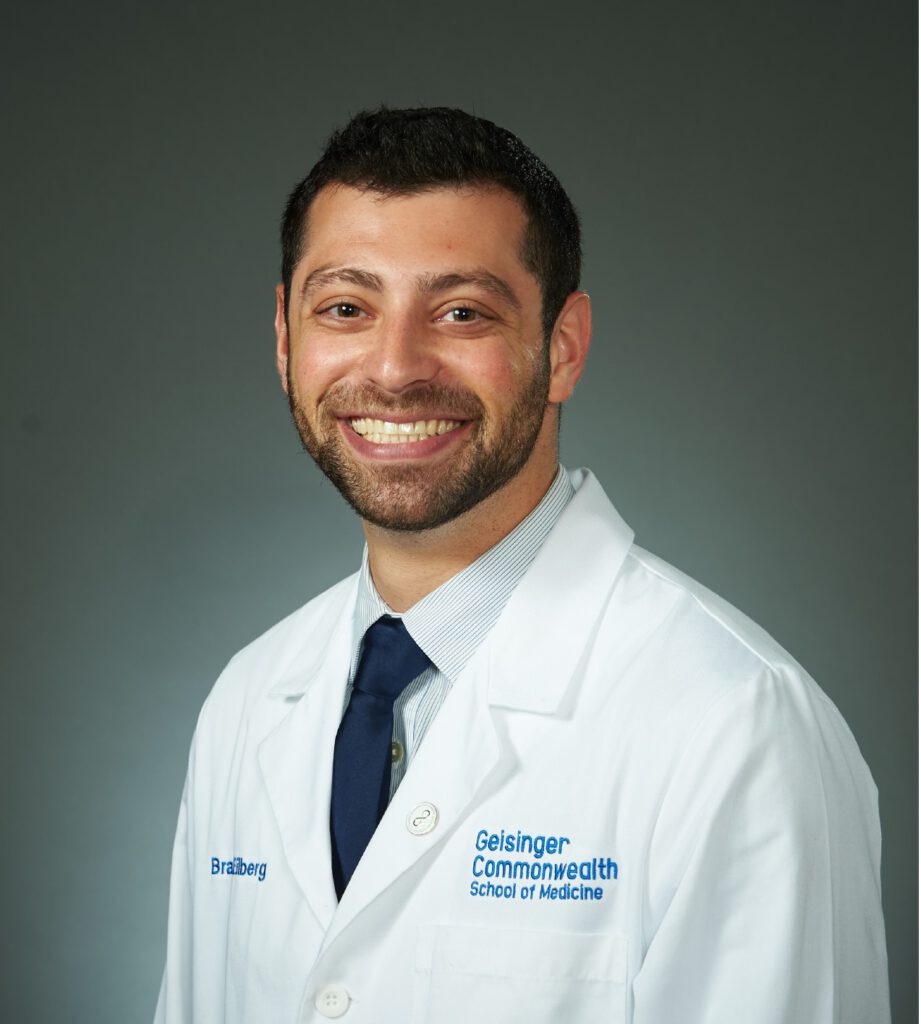
Brandon Eilberg, MD2, GCSOM Class of 2022 – grew up in Bucks County, PA and is currently doing research with Northeast Regional Cancer Center (NROC) on radiation therapy for non-melanoma skin cancers. As a long time beach goer with a family history of skin cancer, he is very interested in this topic.
Summer is in full swing, and we are spending more time outdoors – fishing at the lake, walking in the park, relaxing at the beach, or enjoying a host of other fun activities. We remember to bring music, drinks, and friends, but one key ingredient is usually missing from the recipe for a perfect afternoon – skin protection. Preventing skin damage is just as important as other healthy habits – like exercising regularly and maintaining a nutritious diet. Repeated sun damage can result in sunburned skin that over time can appear dry, wrinkled, leathery, and discolored. Sometimes, these consequences may not appear until years after we get sunburned. The most serious concern of repeated sun damage is skin cancer, which is now the most common of all cancers in the Unites States. However, it is also one of the most preventable. By making just a few simple additions to your daily routine, you can greatly protect your skin and reduce your chances of developing skin cancer.
Below are some suggestions that physicians and cancer organizations recommend to improve the health of your skin:
• When going outside, use a broad spectrum (UVA/UVB), water-resistant sunscreen with an SPF of 30 or higher. Sunscreen acts like a shield for our skin that defends against UVA and UVB rays from the sun, which penetrate the skin and cause redness, burns, and long-term sun damage. Sunscreen is important for all skin types, even if you don’t burn easily. SPF stands for sun protection factor – the higher the SPF number, the greater amount of protection. Apply it on your skin every day when you know you will be outside and make it a habit, like brushing your teeth. Wearing sunscreen will keep you looking young!
• Apply at least 1 ounce (2 tablespoons) of sunscreen to your entire body. Be generous and apply 20-30 minutes before you go outside. Reapply every 2 hours, after swimming, or excessive sweating, even if the product is labeled as “all-day”. Make sure to cover all areas of your skin not protected by clothes!
• Avoid the sun in the middle of the day, from around 10am to 4pm. The sun’s UV rays are strongest at this time, and you may be more likely to burn during this time period. Apply more sunscreen if you want – better safe than sorry!
• Cover up. If you don’t have sunscreen readily available, seek shaded areas and wear protective clothing, such as long-sleeved shirts, pants, shoes, UV-protective sunglasses, and broad-brimmed hats.
• Keep newborns out of the sun. Infants under 6 months of age should be kept out of the sun because their skin is too sensitive for sunscreen and pigments in their skin, hair, eyes, are still developing. This means that they are especially susceptible to the sun’s damaging effects. After the age of 6 months, sunscreen is safe to apply to babies.
• Avoid tanning and never use UV tanning beds. There is no “safe” amount of tanning. The cumulative damage caused by UV rays can cause premature skin aging and skin cancers. Tanning is the body’s defense mechanism that begins after damage has been done by adding extra melanin, a pigment in the skin that acts as a natural sunscreen.
• Examine your whole body, head to toe, every month. Warning signs include changes in size, shape or color of a mole or other skin lesion, the appearance of a new growth on the skin, or a sore that doesn't heal. If you have over 50 moles or burn easily, you may want to check more frequently.
• See a dermatologist for a professional skin exam. If you notice any spots on your skin that are different from the others, or anything changing, itching or bleeding, make an appointment with a board-certified dermatologist. Based on your skin type, history of sun exposure, and family history, a dermatologist may recommend more frequent skin examinations.
Some people may be at a higher risk for developing premature skin aging, sunburns, and skin cancer than others. Possible risk factors may include:
• Increased or excessive exposure to natural and artificial UV light
• History of blistering sunburns during childhood or adolescence
• Exposure to tanning beds, especially in women 45 and younger
• A weakened immune system (due to a medical condition)
• People with a personal or family history of skin cancer
• People who tend to burn easily, or people with blond or red hair (you may naturally produce less melanin)
• People with more than 50 moles, atypical moles, or large moles
I hope you remember these short tidbits on skin health and how to be vigilant about protecting yourself from harmful UV rays. These tips are not meant to be single-use suggestions, they are lifestyle modifications to work into your daily routine. With this knowledge, you can greatly reduce your chances of developing skin-related issues like premature aging or skin cancer. So while you’re outside enjoying your summer and beyond, remember to safeguard your body from the sun. Your skin will thank you.
Sources:
https://www.skincancer.org/prevention/sun-protection/prevention-guidelines
https://my.clevelandclinic.org/health/articles/5240-sun-damage-protecting-yourself
https://www.aad.org/media/stats/conditions/skin-cancer
Read Dr. Mackarey’s Health & Exercise Forum – every Monday. This article is not intended as a substitute for medical treatment. If you have questions related to your medical condition, please contact your family physician. For further inquires related to this topic email: drpmackarey@msn.com
Paul J. Mackarey PT, DHSc, OCS is a Doctor in Health Sciences specializing in orthopaedic and sports physical therapy. Dr. Mackarey is in private practice and is an associate professor of clinical medicine at Geisinger Commonwealth School of Medicine.

Summer football training camps and practice sessions are in full swing in Northeastern Pennsylvania. A few years ago, the Pennsylvania Interscholastic Athletic Association (PIAA) implemented “Preseason Heat-Acclimatization Guidelines” This policy is slightly updated for starting dates each year (www.piaa.org).
At this time each year, I receive several emails from concerned parents regarding heat stroke in football players and hopefully this column will serve to educate coaches, players and parents about the importance of heatstroke prevention.
Most medical professionals agree that the amount of protective equipment worn by football players makes them more susceptible to heat stroke than athletes in other sports. It is also well-accepted that prevention is the best treatment for heat stroke. They feel that overweight and poorly conditioned players should be monitored closely by weighing in before and after practice. A player who loses more than 3% body weight is at risk for heat stroke. These players should be required to take more breaks, with more fluid intake before, during and after practice. Heat stroke one of the most serious heat-related illnesses. Heat stroke is caused by long term exposure to the sun to the point which a person cannot sweat enough to lower the body temperature. The elderly and infants are most susceptible as are athletes wearing full gear and protective equipment. It can be fatal if not managed properly and immediately. Believe it or not, the exact cause of heatstroke is unclear. Prevention is the best treatment because it can strike suddenly and without warning. It can also occur in non athletes at outdoor concerts, outdoor carnivals or back yard activities. The American Academy of Pediatrics and The American College of Sports Medicine has the following recommendations:
Heat Exhaustion – can be a precursor to heat stroke
Gradual Acclimatization to Heat – REFER TO PIAA HEAT-ACCLIMATIZATION Source: www.piaa.org
DO NOT IGNORE SIGNS OF PLAYER DISTRESS OR POOR PRACTICE MANAGEMENT – YOU MAY SAVE A LIFE! – If you witness signs of a player in distress or signs of poor practice management that may jeopardize the health of an athlete, diplomatically speak up. Use references to educate those in charge to recognize there mistakes and improve conditions. Problems occur not because of malice, but usually because of ignorance.
NEXT MONDAY – Read Dr. Paul J. Mackarey “Health & Exercise Forum!”
This article is not intended as a substitute for medical treatment. If you have questions related to your medical condition, please contact your family physician. For further inquires related to this topic email: drpmackarey@msn.com
Paul J. Mackarey PT, DHSc, OCS is a Doctor in Health Sciences specializing in orthopaedic and sports physical therapy. Dr. Mackarey is in private practice and is an associate professor of clinical medicine at GCSOM.

Guest Author: Matt Miraglia, DPT
Matthew Miraglia – received a Doctor of Physical Therapy degree from Temple University in May of 2019 and interned at Mackarey Physical Therapy. He grew up in Plains, PA and graduated from Coughlin High School in Wilkes-Barre. Prior to PT school, he received a bachelor of science in kinesiology from Temple University. Matthew plans to graduate with his doctoral degree in May and work in an outpatient physical therapy clinic in the Wilkes-Barre/Scranton Area.
As discussed last week in Hip Replacement Updates – Part 1, there are a wide variety of reasons for why a total hip arthroplasty (THA), or replacement, may be needed, as well as steps that lead to requiring a total hip replacement. Those that do eventually require a THA should be well prepared for their rehab journey going forward, both before and after the surgical procedure. This article will discuss potential precautions after surgery, as well as a few exercises that will serve as a foundation for the rehabilitation process going forward.
Your surgeon should have discussed with you the type of approach that he/she will be performing, and post-operative precautions that you should be aware of. Depending on the procedure approach, it is critical that recommended precautions are followed in order to protect the integrity of the joint replacement, and allow for proper healing.
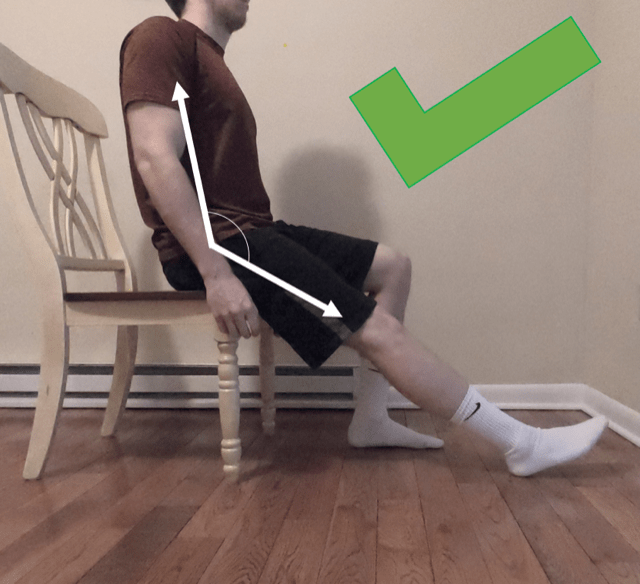
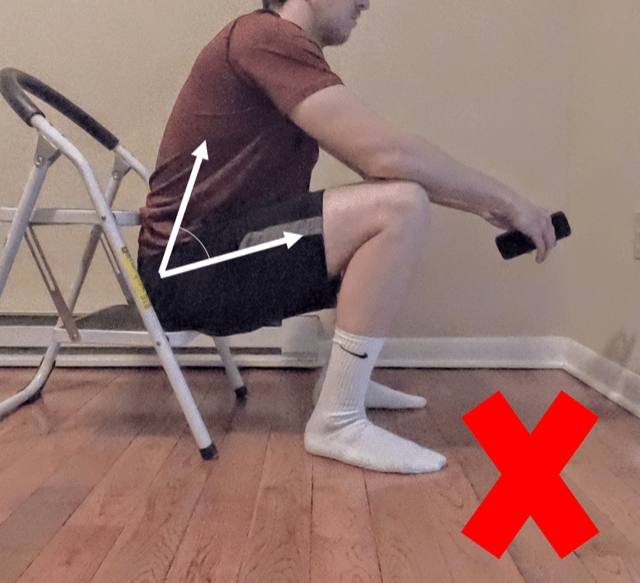
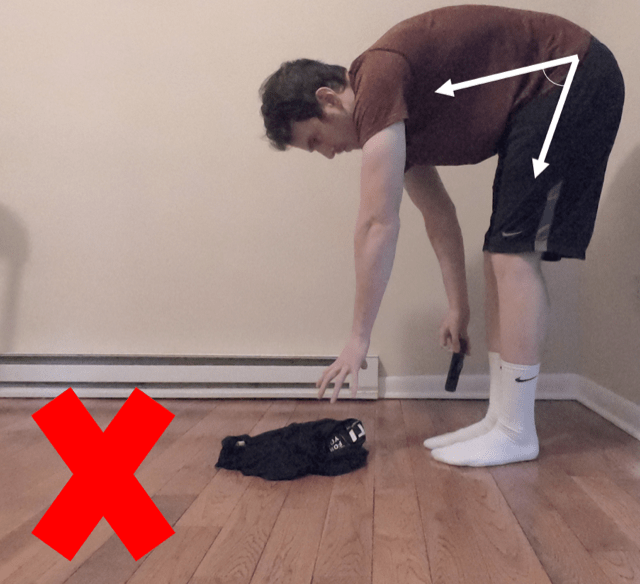

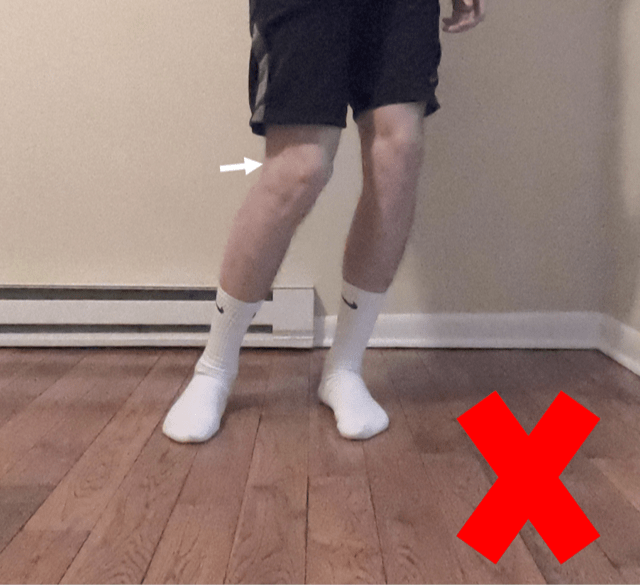
By following these precautions, your hip will be allowed to heal without putting additional strain on the replacement
In addition to precautions, your surgeon should also discuss your ability to bear weight on the affected limb. Most patients are weight bearing as tolerated after surgery, meaning they can put as much weight as they are able to through the leg, but depending age, body type, and if there were any potential surgical complications, weight bearing status may be different. Often a walker is need for a short time after surgery and then advanced to a cane.
Prior to surgery and immediately after surgery there are a few simple exercises that will either maintain (prior to) or help restore (afterwards) hip strength and mobility regardless of the surgical approach utilized. These exercises include: (See Photos)

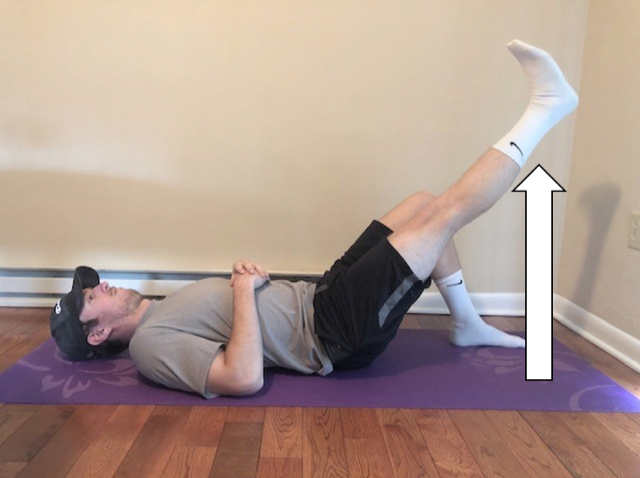
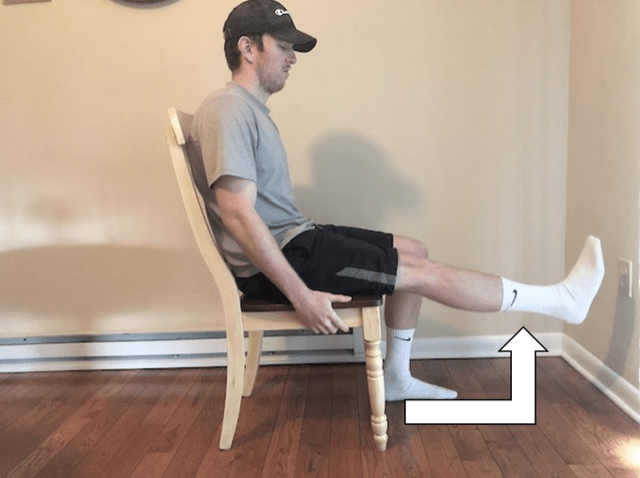
These exercises will serve as a base for strength and mobility of the hip until pain levels begin to decrease and you are able to tolerate and participate in exercises that require greater mobility in order to complete. Eventually, after a strong base has been formed with strength and mobility of the hip, functional activities will be reintroduced in order to make daily activities easier and more comfortable (walking, climbing stairs, sitting to standing, etc.)
Often, it is recommended that a patient see a doctor of physical therapy before surgery to review the procedure, prepare the home environment for safety and to begin a pre operative exercise program.
In summary, hip replacements have been shown to be one of the most stable of all joint replacements with good outcomes. This article highlights surgical precautions and gives a brief overview of the initial rehabilitation process after surgery. If you have further questions about your specific condition and your surgical treatment plan, you should consult your orthopedic surgeon or physical therapist to help guide you through the process.
For more information visit: American Academy of Orthopedic Surgeons at www.aaos.com
Visit your doctor regularly and listen to your body.
NEXT MONDAY – Read Dr. Paul J. Mackarey “Health & Exercise Forum!”
This article is not intended as a substitute for medical treatment. If you have questions related to your medical condition, please contact your family physician. For further inquires related to this topic email: drpmackarey@msn.com
Paul J. Mackarey PT, DHSc, OCS is a Doctor in Health Sciences specializing in orthopaedic and sports physical therapy. Dr. Mackarey is in private practice and is an associate professor of clinical medicine at Geisinger Commonwealth School of Medicine (formerly The Commonwealth Medical College).